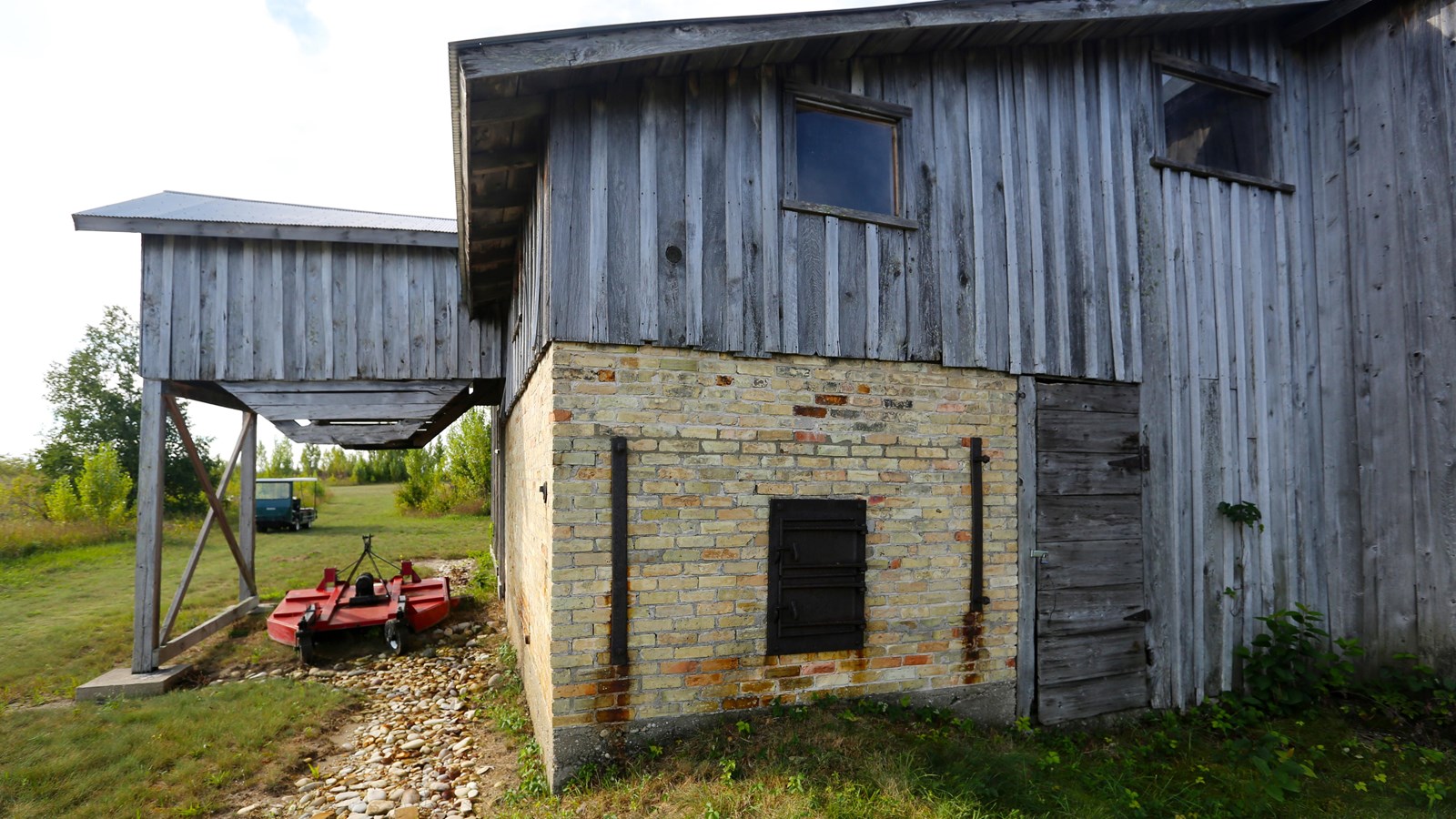Last updated: November 7, 2021
Place
Shingle Mill

NPS credit
Lumbering is an important component of the island's human history. The North Manitou Island Sawmill is a rare, intact example of a steam-powered lumber mill in Michigan and stands as a symbol to the island lumber industry that built two villages and brought entrepreneurs to the island and left cleared fields and forty-two miles of roads behind.
The latest sawmill on the island, built in the late 1920s, was built with traditional technology of the earlier mills. The engine and equipment date from 1875, and the method of construction and layout are typical of sawmills of the late 1800s. Steam powered mills of this type, which were once common in this area, are now rare.
The sawmill supplied material for building the large east side barn in 1927-28, as well as providing a continuous supply of timber and heavy planks to maintain the docks, often damaged by ice in the winter and pounding waves during storms. When MIA was expanding the island into a sportsman paradise, it put the mill back into operation: the lodge was remodeled, and a wing housing the grocery store and post office was added; the village barn was also built for dressing and packaging deer shot on the island. The mill remained active, turning out material for all island building projects including rental cottages for married staff, migrant orchard workers' cabins, and many, many shingles. The machinery was antiquated, even by 1940 standards.
Island deer and early deer hunts
Of all the wildlife located on North Manitou, the white-tailed deer is what you are most likely to see. In 1926, William R. Angell introduced six deer to the island. These few deer became the basis for a rapidly expanding herd which supported a hunting preserve for many years.
The first deer hunt on North Manitou took place in 1937 with 18 deer taken. By counts in the early 1980s, there were about 2,000 deer on the island. Because there were so many deer, they would constantly browse the vegetation within their reach. Over the years, the deer have eaten off all the vegetation which was palatable to them and left that which was not. They don't really care for American beech, so you can find it growing in great abundance on the ground. The vegetation on South Manitou Island is different than that on North Manitou. South Manitou has a thick lush understory of shrubs, ferns, and vines. But the deer browse line on North Manitou is five to six feet up, giving the island a manicured look.
Edgar McKee, island manger from 1937 to 1942, often served as a hunting guide (and was the guide when the first deer was shot in the fall of 1937), describes the early deer hunts. "Hunting was divided into two, three-day sessions each week, starting around Nov 1. It would cost each hunter $150, which covered the boat trip to and from the Island, hotel and meals, a trained guide to hunt with, and a guaranteed deer. Sounds cheap, but back then that was a lot of money.
The island was divided into ten sections. Each guide explored his section in advance, and knew where to find the deer. Only ten hunters were allowed to hunt at one time, and no hunter was allowed out without a guide. This was to assure safety. Also, not hunter was allowed out with a gun if there was any evidence of alcohol impairment."
Most of the island's hunting customers were officials of large companies, invited guests of MIA members. "None of the hardships of hunting and taking care of your deer existed then. The hunter was transported to his hunting spot and picked up at the appointed time. The hunter's job was to shoot the deer his guide pointed out to him. The guide took care of preparing the deer and dragging it to the appointed spot to be picked up."
"Not every hunter took home a deer. During my stay on the Island, most of the hunters killed their deer, but some didn't. It was my job to keep hanging a few choice bucks and does to supply that need. That was no problem. I would take my rifle in the company station wagon with a couple of guides, and drive through the woods. Most of the deer I shot, I shot from the window of the car. It was not unusual to take in four or five deer in on afternoon."
North Manitou Island functioned as an exclusive hunting preserve, much in the tradition of the private hunting clubs that became popular with wealthy men during the late nineteenth century.
Deer hunt still occurs in November managed under the NPS. But, unlike the hunts of Mr. McKee's time, hunters are on their own and have to find and move their deer themselves.
